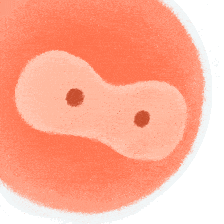Friends and family were delighted to learn of my little signs of recovery. The positive news attracted well-intentioned and earnest enquiries:
“When will all side effects be gone?”
“How are you feeling today?” (The same old question asked the day before and two days prior......)
“When?” I really didn’t know; neither did the doctors. The recovery pace depends on so many personal factors —— such as general physical health, age, tumour size, tumour location (as in how many layers of healthy tissues the radiation has to penetrate to reach the tumour bed), and radiation dosage. The only certainty is that the recovery is a long process that’s measured in weeks, months, or even years. Also, some side effects may never fully ease and I’ll have to learn to live with it till the day I die. I’m not a prophet, nor do I have a crystal ball. I have no prior experience of recovering from radiation trauma, so it’s simply uncharted territory we’re moving into.
One medic friend once said to me that “basic” post-radiotherapy recovery, i.e. to feel more “normal” again, takes at least six months. Only then it would be wise to consider returning to work, and most preferably on a part-time basis.
Six months......
By that time, I had been out of work for three months already. Thankfully I did have an adequate financial buffer to extend the career break by six more months, so, well, let it be then.
How’s yesterday? And today?
It may sound ungrateful, but seriously, I’m afraid I didn’t have much to update people with, since there’s usually no noticeable improvement from day to day, even if I was using medicinal ginseng —— it doesn’t magically cure everything overnight. Lots of the trauma from radiotherapy was internal anyway, its healing was not as easily observable as external wounds.
Since then, I learnt the lesson of giving friends and family space if they unfortunately fall ill or get into some predicament. Instead of checking on (or hassling) them everyday, sometimes it’s more helpful to lend the listening ear and wait for the next update. After all, when one’s busily fighting fires or trying to stay afloat, providing a daily commentary of the latest to concerned friends and relatives is probably the last thing on one’s mind.
I was still filling in the radiotherapy side effect tracker spreadsheet. Before long, I realised that minor improvements did occur every few days, such as less bleeding when brushing my teeth, or a reduction in tinnitus. For other headline issues, including mucositis, trismus and dry mouth, each little bit of noticeable healing took anything from three to six weeks, very slowly, but surely.
The side effects were unleashed and escalating at such a speed that didn’t leave much room for planning, let alone any respite; when they finally began to subside, the departure was so sluggish, as if one’s strenuously wading through a muddy swamp towards a clearly defined destination. It always takes far more effort to rebuild than to destroy.
As sluggish as it was, the gradual easing of the side effects did allow some normality to resume in my daily life, on top of the staple of prescribed energy drinks, medicines, sleep and YouTube. Notably, I started playing the piano, crocheting and cooking again.
During radiotherapy, I didn’t realise how much it affected my mental strength until I noticed how I lost the enthusiasm for my favourite hobbies, none of them are physically demanding. It’s as if the brain was so busy with managing my survival that it had little capacity left for creative activities.
How about cooking? Most of the solid “normal” foods were actually still off the menu for me, but my hands were itching to prepare something for those around me, given I have the physical energy, mood, and plenty of free time. One of the first dishes I took my time to craft was Georgian dumplings, khinkali. I still remember my last batch was from an uneasy evening in spring, when I first learnt that my operation could be delayed. Phew, so much had happened since. A key feature of this dumpling is its brothy filling. I took myself by surprise that I managed to eat two small ones! I needed help with getting seasonings right though, since my taste buds were still quite insensitive —— coffee wasn’t bitter at all, and honey was tasteless......
There were so many food items I wanted to reintroduce into my diet but simply couldn’t (yet). How should we close this gap between reality and my wishes? My sister offered two great strategies. First, “keep trying”, just like how babies first start on solids. Anything that’s not spicy hot and acidic was worth giving a go, especially those with a softer texture. If the food wasn’t agreeable on a particular day, then try again in a few days’ time. Pumpkin was a typical example. Why was it OK on my second attempt? No idea!
Don’t ask, just try!
Oh, and I had crisps! I really craved something crunchy. How to dodge the ulcers, though? Again, just nibble away like a toothless baby, and keep drinking. Yes, it took me five minutes to finish just one piece, but you can't imagine how satisfying it was!
The second strategy was to jot down a “to-eat” list, the culinary equivalent of a “to-do list”, so I had something to look forward to. Wow, I put down sixty items on the list: Korean black bean sauce noodles (jajangmyeon), Japanese instant ramen, Taiwanese bubble tea, salad dressing, Taiwanese pineapple shortcake, tiramisu, sushi, potato fries, noodles tossed in spring onion oil and soya sauce, curry with no chilli, Cantonese roast duck, Cantonese custard tart, pizza, tomato sauce pasta, etc...... The international culinary wish-list went on!
How long would it take to tick off every single dish from the list?
And the ultimate challenge?
Korean kimchi stew!
